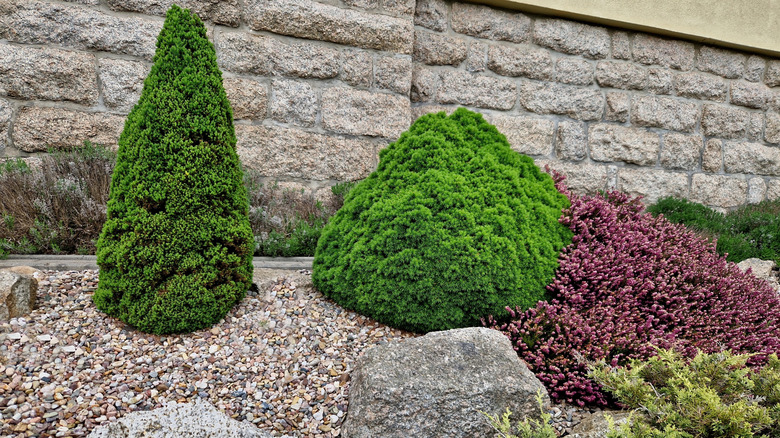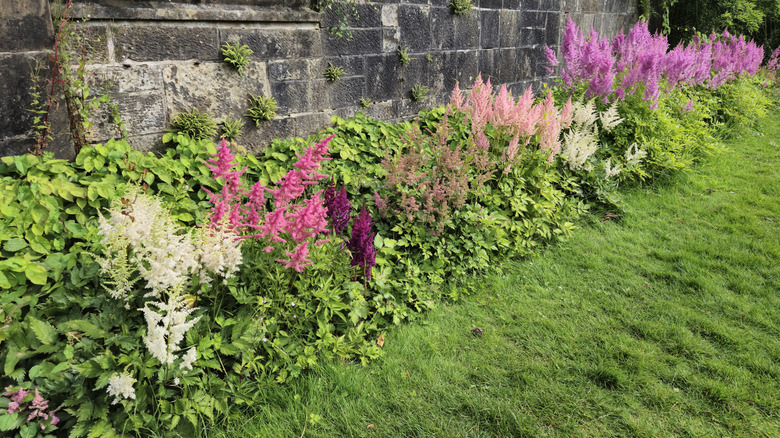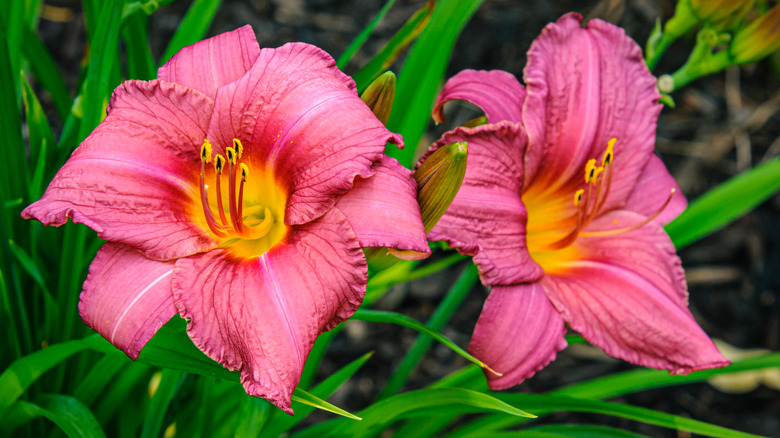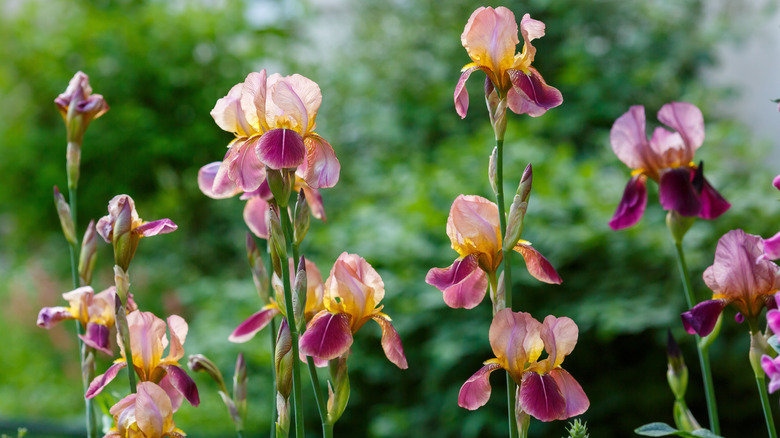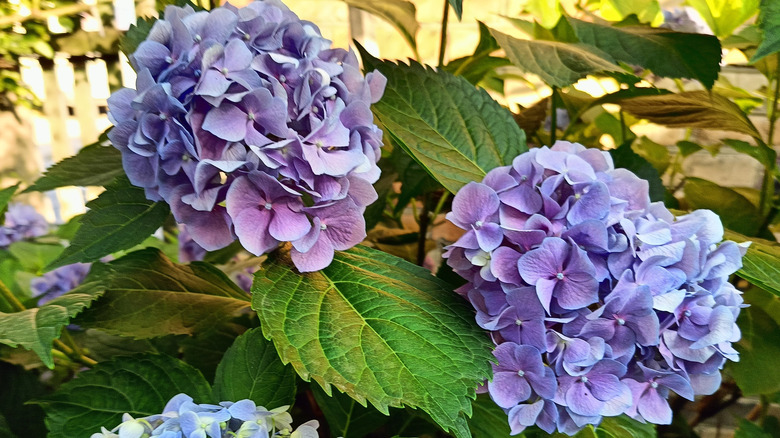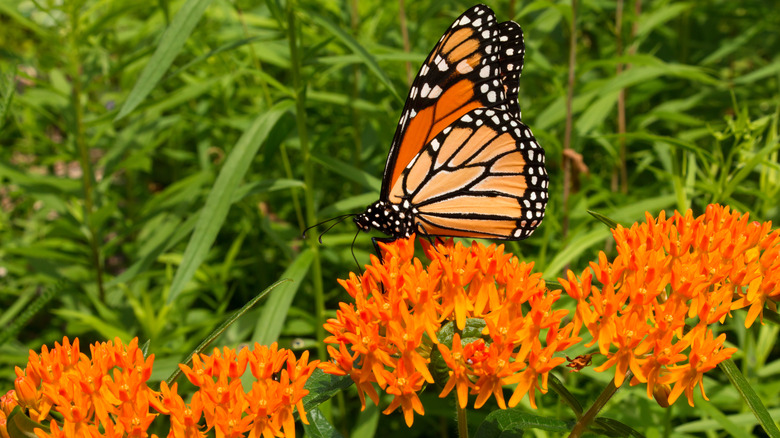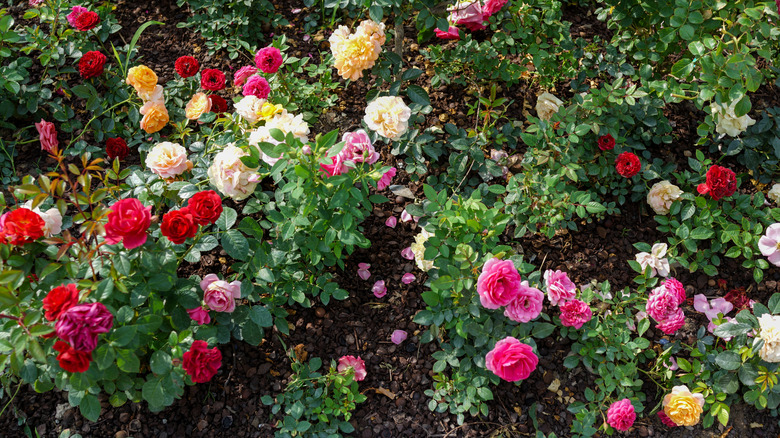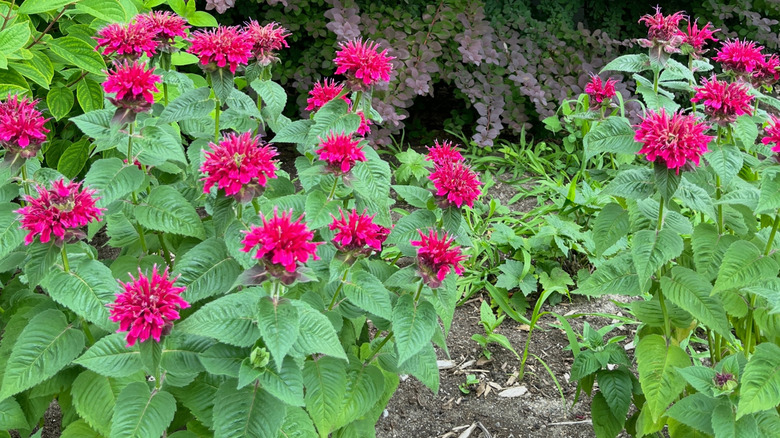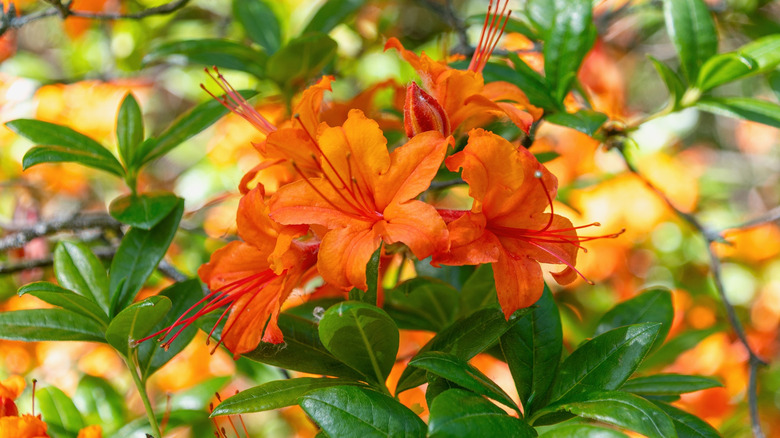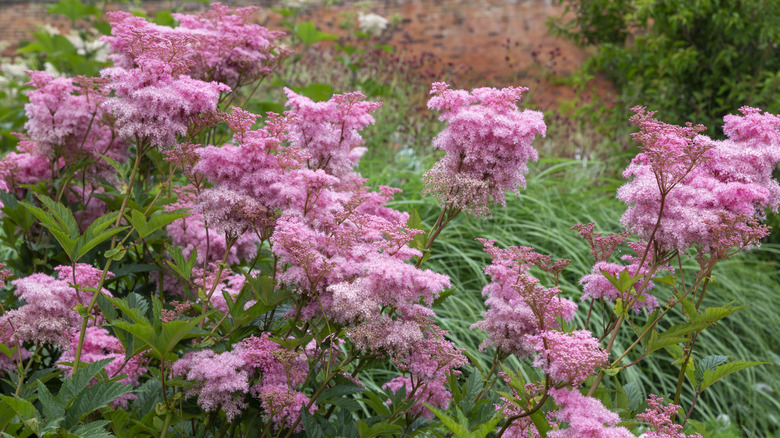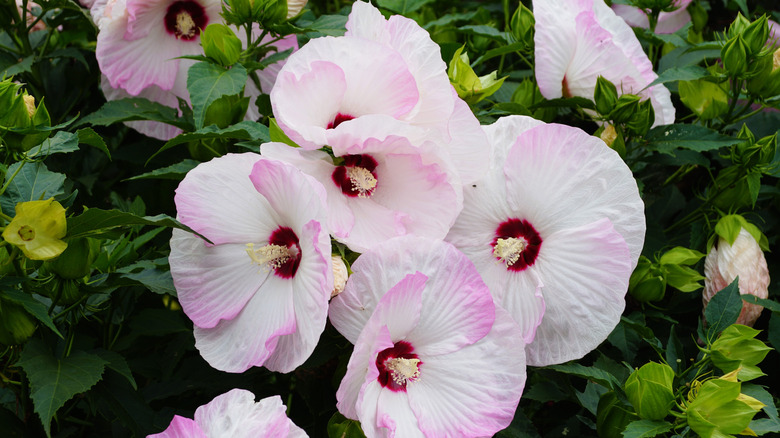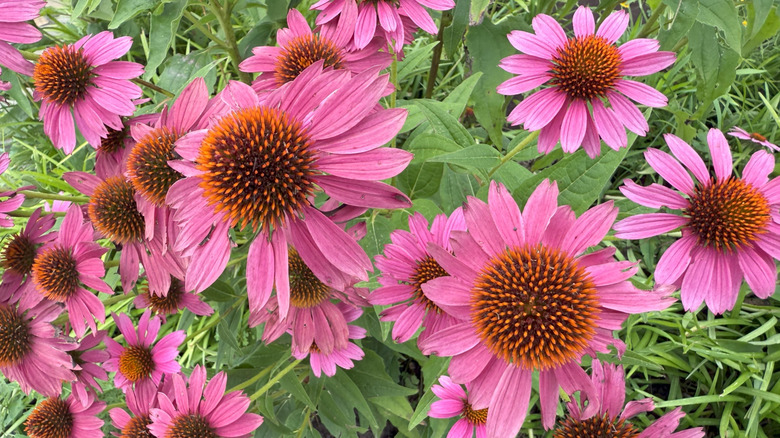13 Plants You Shouldn't Surround With Gravel
Gravel used as mulch has become kind of trendy lately, and it's understandable why — It looks clean and provides striking contrast to plants, and also doesn't need replacing every season, like wood mulches. But, speaking as a gardening professional, I think it's important to understand that gravel isn't the best for all garden plants. Companies that tend to provide gravel in large amounts are often specialists in landscaping and/or hardscaping, but aren't necessarily experts in horticulture. And, from a horticultural perspective, gravel can be detrimental when used as mulch in some situations.
There are several qualities of gravel that can negatively affect plant health and growth. First of all, it's heavy. That weight over time can cause soil compaction, which affects air flow and moisture retention, and hinders the action of microorganisms and creatures (like earthworms), whose activity helps keep soil healthy. Secondly, gravel holds heat, and this can dry out soil and cause heat stress to roots. Third, gravel can actually encourage various kinds of stubborn weeds to flourish, which is the opposite outcome one wants from using mulch.
Generally, I encourage clients not to use gravel as mulch, because it's not only expensive (though some argue it pays for itself over time by being long-lasting), but over time it can cause various problems. Also, it can be washed away by some weather events, and it can get dingy-looking and need refreshing. There are a few different plants I would definitely avoid surrounding with gravel mulch, especially those that like moist or rich soil, or that require frequent dividing, such as day lilies, hostas, hydrangeas, and roses.
Astilbe
Astilbes are flowering perennial plants that do best in partial to full shade and rich, loamy soil. They also like to be kept consistently moist but not wet, so maintaining a well-drained soil environment is important. Gravel as mulch would not only cause these perennials to suffer from lack of moisture, but might also interfere with their roots. Astilbe root systems form thick, tight mats that would get entangled with gravel, making them more difficult to divide.
Day lilies
Day lilies (Hemerocallis) are great, robust perennials that offer loads of flowers in late spring and summer, and some early-blooming varieties rebloom in autumn. Because of their thick root systems, day lilies are good at blocking out weeds that might try to grow nearby, and they also absorb excess moisture very well, much like hostas. Mulching day lilies with gravel can cause problems over time because the gravel tends to get stuck in the little rhizomous roots, making them tricky to divide and possibly interfering with water absorption.
Hosta
Hostas love plenty of moisture, and in fact, make great perennials for moist spots because their root systems can absorb a lot of water. Hosta roots are also very thick, and gravel or rocky soil tends to make the roots difficult to divide for replanting, especially larger varieties. Give hostas a well-drained, loamy soil in a semi-shady spot, and they'll thrive for many years.
Bearded irises
Bearded irises are beautiful and easy to maintain. They benefit from dividing every two years or so to help them flower vibrantly. Bearded irises (also known as German irises) need to have a bit of their rhizome/root exposed to the sun to help them form buds and flower. Because of this special planting condition, using gravel as mulch just doesn't work. Indeed, I try not to use any mulch for irises, as they prefer to be grown in a nice well-drained, slightly sandy soil that lets them absorb the sun and water they need.
Broadleaf hydrangea
Although using gravel to mulch around shrubs is sometimes considered slightly more acceptable or practical than mulching around smaller perennials, many shrubs need to maintain certain soil conditions to thrive. The broadleaf hydrangea is definitely a shrub that prefers specific soil qualities, and these flowering plants like a loamy, well drained, somewhat moist soil that is slightly acidic. Putting gravel around them is likely to deprive the shrubs of nutrients and moisture, so it's best to use a natural mulch that boosts soil nutrients, like shredded pine bark.
Butterfly weed
This gorgeous garden plant attracts pollinators and specifically provides food loved by Monarch butterflies, one of our most important and endangered butterflies. Butterfly weed (Asclepias) comes in several bold colors but the orange is the most common and popular. It likes a rich, moist soil and needs regular water to stay vibrant during hot summers. Gravel is not suitable for mulching because the increased heat radiated by stone can cause this plant to droop and dry out. Use a natural moisture-retaining mulch like shredded pine bark for this pollinator magnet.
Roses
Roses can be very long-lived, and growing roses is considered a bit of an art form among traditional gardeners, as some roses can be a bit fussy. But even easy-care Knockout roses and hybrids need good healthy soil to thrive. Mulching with gravel can deplete soil of nutrients and cause the texture to become dry and loose, when the stone surface heats up in hot weather. Gravel also impedes the addition of soil amendments that add nutrients to help roses stay healthy. Give your roses a natural mulch like dried leaves, wood chips, or shredded pine bark.
Bee balm
Bee balm (Monarda) is an aromatic flowering herb that is wonderful for attracting pollinators to your garden. It likes full sun and a moist, well-drained, slightly rich soil. The roots of this plant are very small and close to the soil surface, so gravel mulch might cause the roots to become dry and overheated in summer, just when the plant needs all the moisture it can get to produce its nectar-rich flowers. Bee balm does well with a light layer of natural mulch to protect its roots and conserve moisture.
Azalea
The azalea is a flowering perennial shrub that produces blooms in spring, summer, and/or fall, depending on the variety. The colorful flowers attract hummingbirds, cardinals and butterflies. Azaleas adapt well to dappled or partial shade, and can handle full sun (morning sun is preferable to afternoon sun to keep the blooms fresh). Using gravel as mulch for these shrubs isn't really recommended, because over time, gravel can cause soil to get compacted and this can interfere with root development. Azaleas like a well-drained, acidic soil rich in organic matter, so natural mulches are best for them.
Meadowsweet
Meadowsweet comes in white (Spirea alba) and pink flowering varieties. I love the pink one (Filipendula rubra) with its cotton-candy colored blooms on tall stalks that attract many butterflies. Also, its common name is Queen of the Prairie! This plant thrives in moist soils and full sun. It spreads by rhizome-like roots (that are easy to divide) and should be planted close to the soil surface. Gravel would possibly injure the rhizomes and also interfere with water absorption, so a very light layer of natural mulch is better for this elegant plant.
Hardy hibiscus
The hardy hibiscus ((Hibiscus moscheutos) produces huge colorful flowers in summer that attract many pollinators. Though this plant appears shrub-like in its full summer growth, the stems can be cut back every fall to return in spring. Hardy hibiscus likes a well-drained but moist soil with plenty of organic matter. It's easy to maintain once established. Keep it well watered and deadhead spent blooms to keep it flourishing in summer. Natural mulches are best to nourish the soil and help the plant conserve moisture, so gravel much is definitely not a good fit for this plant.
Coneflowers
Coneflowers (Echinacea) are robust perennials that attract insect pollinators to their nectar rich flower cones, and later when the cones go to seed, birds come by to eat them! A wonderful flower for biodiversity in the garden. They're pretty sturdy, and are tolerant of poor soils and even drought. Sounds like they'd do okay with gravel mulch, huh? But their root systems are leggy and would probably become tricky to divide if they were exposed to gravel, so I think it's best to avoid it. My coneflowers seem to like pine bark mulch or wood chips.
Joe Pye Weed
Growing up to six feet tall, this pollinator magnet has flowers of a lovely dusky mauve color, and blooms for weeks in summer. Joe Pye weed (Eutrochium maculatum) is a majestic meadow flower that will thrive in partial to full sun, and loves moist, somewhat boggy soil. The root systems can get quite thick and have to usually be cut to be divided. For this reason, gravel mulch would make this plant somewhat challenging to divide, so using a natural, lightweight, moisture-retaining mulch, like shredded pine bark or natural pine chips, would be more suitable.
